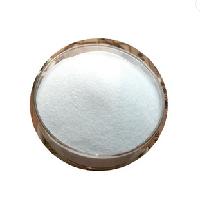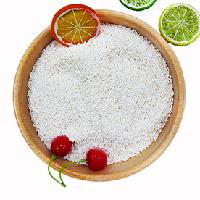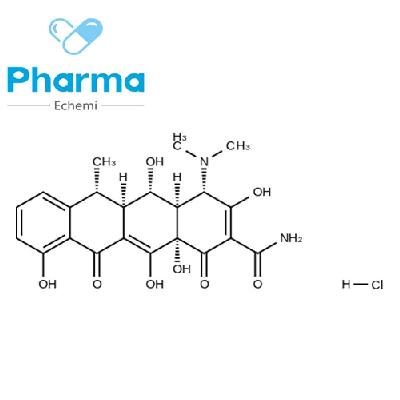-
Categories
-
Pharmaceutical Intermediates
-
Active Pharmaceutical Ingredients
-
Food Additives
- Industrial Coatings
- Agrochemicals
- Dyes and Pigments
- Surfactant
- Flavors and Fragrances
- Chemical Reagents
- Catalyst and Auxiliary
- Natural Products
- Inorganic Chemistry
-
Organic Chemistry
-
Biochemical Engineering
- Analytical Chemistry
-
Cosmetic Ingredient
- Water Treatment Chemical
-
Pharmaceutical Intermediates
Promotion
ECHEMI Mall
Wholesale
Weekly Price
Exhibition
News
-
Trade Service
Abstract: The current situation of domestic automobile bumper spraying process and water-based coatings used is investigated, and the process trend of water-based bumper coatings is analyzed.
Keywords: bumper; spraying; water-based paint; verification
According to the requirements of the "Beijing-Tianjin-Hebei and surrounding areas 2018-2019 autumn and winter comprehensive treatment of air pollution" The limit of VOCs (volatile organic compounds) content in the ready-to-use state is 580 g/L
1 Status Quo Investigation
It can be seen from Table 1 that both solvent-based primers and solvent-based paints do not meet the requirement of VOCs of less than 580 g/L in the "Plan"
Table 1 VOCs content of solvent-based 3C1B coatings in the construction state of a bumper spraying production line in a base
Table 1 Contents of VOCs in solvent-based paints used in 3C1B process for spraying bumpers under working conditions
It can be seen from Table 2 that the mainstream spraying process for domestic automobile bumpers is still the solvent-based 3C1B process, and only some manufacturers use water-based paint processes for their primers or/and color paints
Table 2 Investigation of production processes and water-based coatings of major domestic automakers and bumper spraying plants
Table 2 Investigation on production process and application of waterborne paints in main auto manufacturers and bumper spraying plants in China
2 Bumper spraying process
2.
Whether it is water-based or solvent-based coatings, and whether it is 3C1B or 3C2B process, pretreatment is essential
2.
2 Flame treatment
The mainstream of the bumper material is modified PP (polypropylene), and its surface tension is generally only 31 mN/m or lower, and the low surface tension surface has poor wettability and adhesion to the paint
.
In order to improve the adhesion of the paint film on the workpiece, most domestic and European and American systems have a flame treatment process, that is, the surface of the workpiece is treated with a high temperature flame of 1 000 to 2 000 °C [2]
.
Due to the oxidative degradation of the flame, the carbon chain on the PP surface degrades and generates active groups (such as oxidized into carboxyl groups, etc.
), so as to achieve the purpose of surface modification and activation of the material, and increase the surface tension of the material (up to 40 mN/ m above)
.
In recent years, some bumper material manufacturers have developed flame-free treatment materials, which can effectively increase the surface tension of PP by adding a small amount of polar additives [3]
.
This method not only improves the surface activity of the substrate, but also reduces the investment cost of the flame treatment chamber body and the proprietary equipment of the coating line, and also reduces the energy consumption cost during production operation
.
2.
3 Spraying process
The solvent-based 3C1B of the bumper is a mainstream and mature process.
In recent years, the newly-built production line basically adopts the method of full spraying robot and large-scale circulating air.
The biggest advantage of this method is that it reduces energy consumption and cancels With the input of the concentration runner, the paint spray exhaust gas can directly enter the RTO (regenerative heat incinerator) for combustion
.
The water-based 3C1B process requires a stricter construction environment than the solvent-based process, and it needs to be flashed after the primer and color paint to ensure that the moisture content of the paint film is reduced to a certain level, otherwise it is easy to produce film defects such as pinholes
.
After detailed technical exchanges with major paint manufacturers, the current status and application of water-based spray lines for bumpers were sorted out (see Table 3): European and American systems are a large category, mostly 3C2B, and the proportion of water-based paint for the base paint has been Up to 60% [4]; domestic and Japanese are another category, generally using water-based 3C1B process
.
Table 3 Application situation of two typical water-based spraying lines
Table 3 Application of two typical water-based spraying lines
3 Supporting test verification of water-based paint
3.
1 Verification scheme
Test and verify the 3C2B process adopted by European and American paint manufacturers and the 3C1B adopted by Japanese paint manufacturers
.
Water-based conductive primer is divided into 1K and 2K, colored paint is 1K water-based paint, and varnish is 2K solvent-based
.
Refer to Table 4 for the paint types and construction parameter verification schemes recommended by various paint manufacturers
.
It should be noted that Table 4 is for reference only.
Different OEMs and different bumper materials may have different selections
.
Table 4 Paint types and construction parameters of different paint manufacturers
Table 4 Process parameters of paints from different suppliers
3.
2 Inspection standards
Since there is no corresponding paint film testing standard system for water-based paints, the company’s solvent-based paint standards will be used as a blueprint for the water-based paints, and the existing applied domestic and joint-venture brand car companies’ water-based paint standards will be used to find out the differences and sort out the water.
See Table 5 for the testing standards of the paint test
.
Table 5 Low-temperature water-based paint film performance requirements
Table 5 Requirements of coating properties for low-temperature waterborne paint
3.
3 Test results
This paper only selects the test results of 2 manufacturers, as shown in Table 6
.
It has been verified that Volvag's high-pressure water impact is limited to 70 bar by the test equipment, and all others are qualified
.
Table 6 Test results of 2 products
Table 6 Test results of products from two suppliers
1) Limited by the test equipment, only 70 bar
.
4 Application
With reference to the previous verification results of water-based paint materials, combined with the characteristics of the project itself, a 30 JPH bumper (PP material) coating line was planned and designed, and the 3C1B water-based paint spraying process was selected, namely "PP electrostatic primer + water-based paint" Lacquer + high solid content two-component varnish", the pre-treatment adopts the process plan of "manual wiping + dry ice treatment"
.
The process flow of the coating line: upper part → manual wiping → dry ice treatment → primer spraying → leveling → colored paint spraying → pre-drying → varnish spraying → drying → polishing/inspection → lower part
.
Primer spraying: film thickness 6-8 µm, leveling time ≥10 min
.
Paint spraying: Uya black film thickness is 10 ~ 15 µm, simple white film thickness is 20 ~ 25 µm
.
Color paint pre-drying: heating time 120 s, holding time 240 s, forced cooling 120 s
.
Varnish spraying: film thickness 50 ~ 55 µm, leveling time ≥ 8 min
.
Drying: temperature 85 ~ 90 °C, time 25 ~ 30 min
.
Main process equipment: spray booth adopts dry spray booth, constant temperature and humidity design, winter temperature (23 ± 2) °C, summer temperature (25 ± 2) °C, relative humidity (65 ± 5)%; paint mixing room and The paint delivery system is designed in accordance with the technical requirements of water-based paint; the robot automatic air spray system is used to spray the color paint, and the varnish adopts the robot automatic electrostatic spraying
.
After more than 3 months of on-site debugging, the final inspection data of the paint film appearance is shown in Table 7
.
Table 7 Orange peel measurement data of finished bumper sprayed products
Table 7 Result of orange peel measurement for the sprayed bumpers
At present, the coating line has formed mass production capacity, and can achieve the final appearance quality and performance requirements of the paint film.
The adhesion can reach 0 grade, the pencil hardness can reach HB, and the gloss and DOI can reach above 85
.
The practical application of this project can provide reference for the planning of the new bumper coating line and the transformation and upgrading of the old line
.







